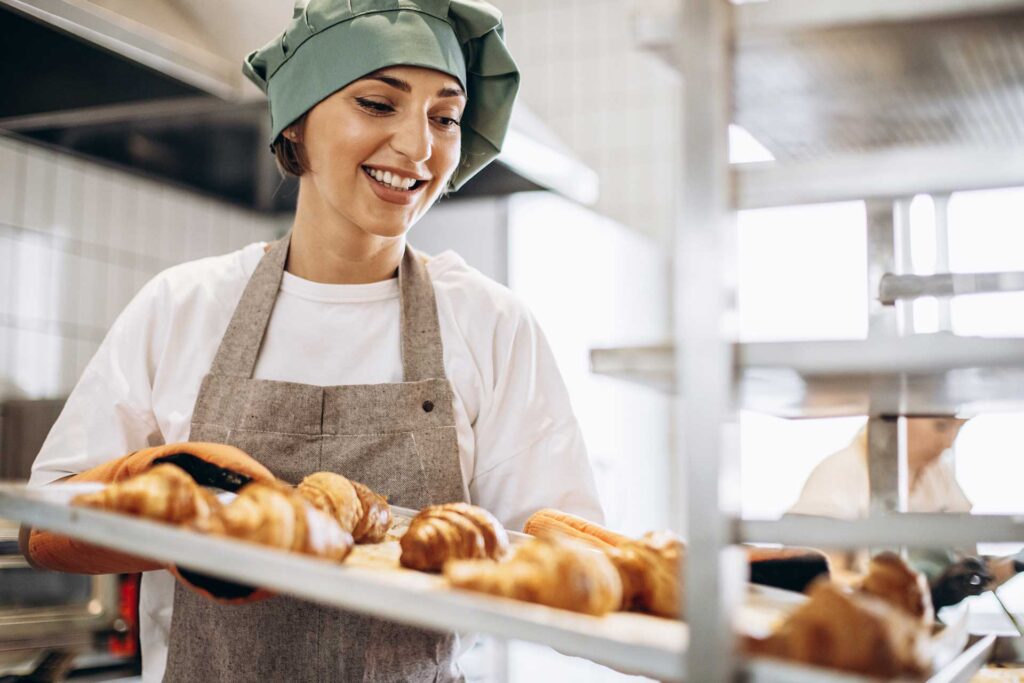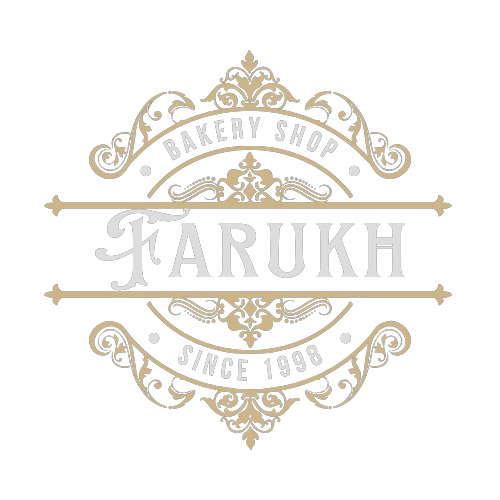Baking For Beginners
Baking is a delightful art that combines science, creativity, and a pinch of love. Whether you dream of fluffy cakes, crusty breads, or decadent pastries, having the right tools and techniques at your disposal can make all the difference. In this comprehensive guide, we’ll explore essential baking tools, fundamental techniques, and tips to help you embark on your baking journey with confidence.

1.Baking For Beginners
Baking is not just about following a recipe; it’s about understanding how ingredients work together and mastering techniques to create delicious results. As a beginner, you might feel overwhelmed by the sheer variety of recipes and methods available. However, with the right foundation, you’ll be able to tackle any recipe with confidence.
2. Essential Baking Tools
Investing in a few key tools can significantly enhance your baking experience. Let’s break down the essential tools into categories.
Measuring Tools
Accurate measurements are crucial in baking. Here are the tools you’ll need:
- Dry Measuring Cups: For measuring flour, sugar, and other dry ingredients. They typically come in sets of 1 cup, ½ cup, ⅓ cup, and ¼ cup.
- Liquid Measuring Cups: These usually have a spout for pouring and markings to measure liquids accurately. A 2-cup capacity is a great starting point.
- Measuring Spoons: Essential for measuring small quantities of both dry and liquid ingredients.
- Kitchen Scale: For precise measurements, especially useful in recipes that require accuracy. Many bakers prefer weighing ingredients over measuring them by volume.
Mixing Tools
The way you mix your ingredients can influence the texture and rise of your baked goods.
- Mixing Bowls: Have a variety of sizes; stainless steel, glass, and ceramic bowls are all great options.
- Whisk: Perfect for mixing dry ingredients, incorporating air into batters, and emulsifying dressings.
- Spatula: A silicone or rubber spatula is great for scraping bowls and folding ingredients together.
- Wooden Spoon: A classic tool for mixing thicker batters and doughs.
- Hand Mixer or Stand Mixer: A hand mixer is great for beginners, but if you plan to bake frequently, a stand mixer can save time and effort.
Baking Equipment
The right bakeware ensures even cooking and can elevate your baking game.
- Baking Sheets: Flat pans for cookies, pastries, and more. Choose heavy-gauge aluminum for even baking.
- Cake Pans: Round, square, or rectangular—having a variety helps you tackle different cake recipes.
- Loaf Pans: Essential for quick breads and pound cakes.
- Muffin Tin: Perfect for muffins, cupcakes, and even savory bites.
- Pie Dish: For both sweet and savory pies.
- Rolling Pin: A must for rolling out dough for pies, cookies, and pastries.
Cooling and Storing Tools
Once your baked goods are done, proper cooling and storage are key.
- Cooling Rack: Allows baked goods to cool evenly and prevents sogginess.
- Parchment Paper: Great for lining pans and preventing sticking.
- Storage Containers: Airtight containers help keep baked goods fresh for longer.
3. Basic Baking Techniques
Understanding fundamental techniques will help you navigate any recipe with ease. Let’s explore some of these essential techniques.
Measuring Ingredients
Accurate measurements ensure that your baked goods turn out as intended.
- Dry Ingredients: Spoon flour into your measuring cup and level it off with a straight edge. Avoid scooping directly from the bag, as this can compact the flour and lead to over-measuring.
- Liquid Ingredients: Use a liquid measuring cup and ensure you’re at eye level to get an accurate reading.
Mixing Methods
Different recipes require different mixing techniques.
- Creaming: This method involves beating butter and sugar together until light and fluffy. This incorporates air into the batter, essential for cakes and cookies.
- Folding: Gently incorporating one ingredient into another without deflating air. This technique is often used for whipped cream or egg whites in delicate recipes.
- Kneading: Working dough to develop gluten, creating structure in bread. Knead until the dough is smooth and elastic.
Oven Techniques
Understanding your oven can greatly affect your baking.
- Preheating: Always preheat your oven to the temperature specified in the recipe. This ensures even baking.
- Baking Times: Keep an eye on your baked goods, as oven temperatures can vary. Use a toothpick to check for doneness—if it comes out clean, your cake or bread is ready.
Decorating Basics
Adding the final touches to your baked goods can be a fun and creative process.
- Frosting: Use a spatula or piping bag to spread or pipe frosting on cakes and cupcakes.
- Dusting: A light dusting of powdered sugar can elevate the presentation of cookies and pastries.
- Glazing: A simple sugar glaze can add flavor and shine to baked goods.
4. Common Baking Ingredients
Familiarizing yourself with common baking ingredients is essential for understanding how they function in your recipes.
- Flour: The backbone of most baked goods. All-purpose flour is versatile, while bread flour has a higher protein content for yeast breads.
- Sugar: Adds sweetness and helps with browning. Granulated, brown, and powdered sugars each have unique properties.
- Butter: Adds richness and flavor. Can be used in varying forms—softened, melted, or cold—depending on the recipe.
- Eggs: Provide structure, moisture, and richness. Eggs can also be used to bind ingredients together.
- Baking Powder and Baking Soda: Leavening agents that help baked goods rise. Understanding the difference between them is crucial; baking soda requires an acid to activate, while baking powder contains an acid already.
5. Tips for Baking Success
Here are some additional tips to help you on your baking journey:
- Read the Recipe Thoroughly: Before starting, read through the entire recipe to understand the steps and timing involved.
- Room Temperature Ingredients: Many recipes call for ingredients like butter and eggs to be at room temperature for better mixing.
- Don’t Overmix: Overmixing can lead to tough baked goods, particularly in recipes with flour.
- Experiment with Flavors: Once you feel comfortable, try adding spices, extracts, or zests to customize your baked goods.
- Keep Your Workspace Clean: A tidy workspace makes the process more enjoyable and reduces the risk of mistakes.
6. Baking For Beginners Friendly Recipes
Simple Vanilla Cupcakes
Ingredients:
- 1 ½ cups all-purpose flour
- 1 cup granulated sugar
- ½ cup unsalted butter, softened
- 2 large eggs
- 1 cup milk
- 2 tsp baking powder
- 1 tsp vanilla extract
- ½ tsp salt
Instructions:
- Preheat your oven to 350°F (175°C) and line a muffin tin with cupcake liners.
- In a bowl, cream the softened butter and sugar until light and fluffy.
- Add the eggs one at a time, mixing well after each addition. Stir in vanilla.
- In another bowl, combine flour, baking powder, and salt. Gradually add this to the butter mixture, alternating with the milk.
- Fill each cupcake liner about 2/3 full and bake for 18-20 minutes. Check for doneness with a toothpick.
- Allow to cool completely before frosting.
Classic Chocolate Chip Cookies
Ingredients:
- 2 ¼ cups all-purpose flour
- 1 tsp baking soda
- ½ tsp salt
- 1 cup unsalted butter, softened
- ¾ cup granulated sugar
- ¾ cup brown sugar
- 1 tsp vanilla extract
- 2 large eggs
- 2 cups chocolate chips
Instructions:
- Preheat your oven to 375°F (190°C).
- In a small bowl, whisk together flour, baking soda, and salt; set aside.
- In a large bowl, beat butter, granulated sugar, brown sugar, and vanilla until creamy. Add eggs, one at a time.
- Gradually add flour mixture. Stir in chocolate chips.
- Drop by rounded tablespoons onto ungreased baking sheets.
- Bake for 9-11 minutes, or until golden brown. Cool on the baking sheets for a few minutes before transferring to a wire rack.
1.Understanding Ingredients
Knowing your ingredients is fundamental. Each one plays a specific role:
- Flour: The base of most recipes; different types (all-purpose, cake, bread) affect texture.
- Sugar: Sweetens and adds moisture; brown sugar adds richness.
- Fat: Butter and oils add flavor and tenderness. Butter is best for flavor, while oils can keep baked goods moist.
- Eggs: Bind ingredients, provide moisture, and contribute to leavening.
2. Invest in Quality Tools
Having the right tools can simplify the baking process:
- Mixing Bowls: A variety of sizes helps manage different recipes.
- Measuring Tools: Accurate measurements are crucial; invest in dry and liquid measuring cups, as well as a kitchen scale for precision.
- Mixers: Hand mixers are great for beginners, while stand mixers are ideal for more extensive baking projects.
3. Follow Recipes Closely
Baking is a science, so precision is key:
- Read the Entire Recipe: Before you start, read through all steps to avoid surprises.
- Prep Ahead: Measure out and prepare all ingredients before you start mixing (mise en place).
4. Master Basic Techniques
Familiarize yourself with essential mixing and baking techniques:
- Creaming: Beat butter and sugar until light and fluffy to incorporate air for cakes.
- Folding: Gently combine delicate mixtures, like whipped cream, without deflating them.
- Kneading: For bread dough, knead until smooth and elastic to develop gluten.
5. Know Your Oven
Understanding your oven can impact your baking results:
- Preheat: Always preheat your oven to ensure even cooking.
- Oven Thermometer: Use one to check for accurate temperatures.
- Placement: Position your pans correctly—usually in the center of the oven for even heat distribution.
6. Practice Patience
Baking often requires time and careful observation:
- Don’t Rush: Allow baked goods to cool properly to avoid sogginess.
- Check Doneness: Use a toothpick to test for doneness; it should come out clean or with a few crumbs.
7. Experiment with Flavors
Once you’re comfortable, start adding your own twist:
- Extracts and Zests: Try adding vanilla, almond extract, or citrus zests to enhance flavor.
- Spices: Incorporate spices like cinnamon or nutmeg for depth.
8. Learn from Mistakes
Every baker has mishaps; use them as learning opportunities:
- Analyze: If a recipe doesn’t turn out, figure out what went wrong—was the oven temperature off? Did you measure correctly?
- Keep a Journal: Note what you made, any changes you tried, and the results. This will help you refine your techniques.
9. Storage Techniques
Proper storage keeps your baked goods fresh:
- Airtight Containers: Use them to store cookies, cakes, and breads to maintain moisture.
- Freezing: Many baked goods freeze well. Wrap them tightly and label with dates.
10. Enjoy the Process
Baking should be enjoyable, so have fun with it!
- Experiment: Don’t be afraid to try new recipes or variations on your favorites.
- Share: Baking is a great way to connect with others. Share your creations with friends and family!
For Tasty And Delicious Cakes And More Blogs Like baking For Beginners:-Bakery Safety 01: Best Practices in the Kitchen
If You Want A Blog Related To Pizaa Then Click Here:-http://thepizzatown.in

Pingback: Creating the Perfect Cupcake: Flavors, Frostings, and.......
Pingback: How to Make Best Homemade Bread Without Machine 2024